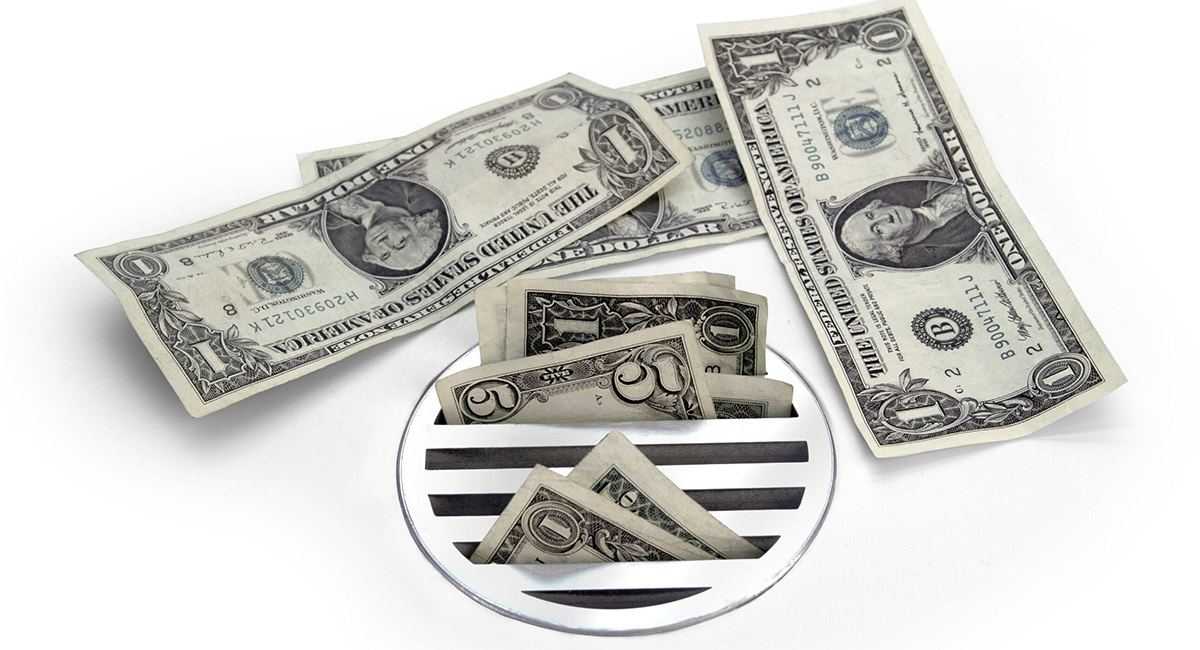The consumer-price index has risen 5.4% over the past 12 months. President Biden says we are facing a temporary bout of price increases caused by supply-chain glitches and bottlenecks that are themselves temporary. But while supply-chain problems affect prices of specific commodities, they have little effect on the overall price level if monetary growth is stable. The problem is that monetary growth in the U.S. has been anything but stable.
“Inflation is always and everywhere a monetary phenomenon,” Milton Friedman said. Inflation isn’t caused by temporary supply-chain disruptions. Take Japan during the 1979-80 oil crisis: Oil prices surged, but consumer prices remained stable. In China today, raw-material prices are soaring, but consumer prices have hardly budged.
To explain what is happening in the U.S. economy, we present the bathtub theory of money and inflation. Money flows into the tub through the faucet. The bathtub has three drains.
One drains into economic growth—a k a growth in real gross domestic product. Another drains into money that the public wishes to hold relative to its income measured by the ratio M/Py, where M is the money supply, P is the price level, and y is real GDP. Nobel Prize-winning economist Lawrence R. Klein called this one of the five great ratios in economics.
In noninflationary times, the inflow from the faucet roughly equals the outflow through these two drains. But if more money is flowing in than out, the level of money rises. It will eventually reach the overflow, which is the inflation drain. It usually takes about two years for any excess money to show up as inflation.
Let’s take a look at the U.S. bathtub. During the early months of the Covid-19 pandemic, the faucet was wide open. Between December 2019 and August 2021, the U.S. money supply, measured by M2, grew by $5.5 trillion, a stunning 35.7% increase in only a year and a half, driven primarily by the Fed’s purchases of Treasurys and mortgage-backed securities. In light of anticipated Federal Reserve tapering, we estimate that by the end of 2024 the money supply will grow another $5.1 trillion.
Out of the total $10.6 trillion in new money, real GDP growth will drain roughly $1.4 trillion. Another $1 trillion will flow down the money demand drain. Since the amount of money flowing into the bathtub far exceeds the two outflows, the excess money in the tub—around $8.2 trillion—will hit the inflation overflow drain.
The huge monetary expansion—$5.5 trillion already in the bathtub—is starting to reach the overflow. Persistent, not transitory, inflation will be with us for the next two to three years.









